
Министерство образования и науки Челябинской области
Государственное бюджетное профессиональное образовательное учреждение «Озерский технический колледж»
(ГБПОУ ОзТК)

СБОРНИК ТЕКСТОВ ПО ТЕМЕ: СОВРЕМЕННЫЕ
ОТДЕЛОЧНЫЕ МАТЕРИАЛЫ ДЛЯ
СПЕЦИАЛЬНОСТЕЙ МАСТЕР
ОБЩЕСТРОИТЕЛЬНЫХ РАБОТ, МАСТЕР
ДЕКОРАТИВНЫХ РАБОТ
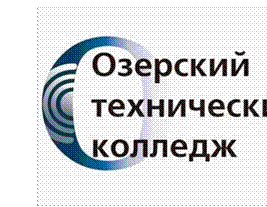
Методическое объединение учителей английского языка
ГБПОУ "ОзТК"
Автор разработки Романов Д.Е.: преподаватель иностранного языка.
2123 год Озерск
Пояснительная записка
В данном сборнике упражнений представлены 18 лексических заданий, рассчитанных на 36 академических часов практической работы. Каждая подтема соответствует одному часу работы.
Порядок работы с заданиями:
1.Каждое задание содержит перечень слов, обязательных к отчитыванию, переводу, устному проговариванию орфографических и семантических особенностей. После чего, учащиеся вставляют слова в пропуски в тексте. 2. Текст отчитывается через озвучивание в онлайнпереводчике или преподавателем. На усмотрение преподавателя, занятие может сопровождаться видео на соответствующую тему, содержащим изучаемую лексику. Преподаватель акцентирует грамматические нюансы и обороты, встречающиеся в тексте. 3. Домашнее задание по данной теме включает :
• Контрольное чтение изучаемого текста
• Диктант по особенно сложным словам из перечня новых слов и текста
• Выучивание отрывка текста наизусть
• Подготовка учащимися сообщений, связанных с указанной темой и содержащих изучаемые слова
Данный сборник рекомендуем для работы с группами студентов технического профиля обучения.
Оглавление
MODERN BUILDING MATERIALS...................................................................................... 4
Part 1. BUILDING MATERIALS Text 1. New glass concrete in Colombia University.............. 4
Text 2. Glass concrete precast facade elements...................................................................... 5
Text 3A. Fiber-reinforced concrete....................................................................................... 6
Text 3B. Low-cycle fatigue of fiber-reinforced concrete........................................................ 6
Text 4. Concrete paving stones.......................................................................................... 6
Text 5. Foam concrete....................................................................................................... 7
Text 6. Polystyrene............................................................................................................ 8
Text 7. Plastfoil................................................................................................................. 9
Text 8. Bricks from waste fly ash....................................................................................... 9
Text 9. Coal ash makes hardy cement.............................................................................. 10
Part 2. SECONDARY MATERIALS ........................................................................................
Text 10. Soffit.................................................................................................................... 11
Text 11. Siding................................................................................................................... 11
Text 12. Wood siding......................................................................................................... 12
Text 13. Plastic siding....................................................................................................... 13
Text 14. Metal siding......................................................................................................... 13
Text 15. Masonry siding.................................................................................................... 15
Text 16. Composite siding.................................................................................................. 15
Text 17. Glass magnesium sheet........................................................................................ 16
Text 18. Porcelain tiles...................................................................................................... 17
Text 19. Water-dispersion paints (acrylic paint).................................................................. 17
Text 20. Composition of DuPont Corian............................................................................ 18
Перечень использованных электронных источников ..............................................................20
The construction industry consumes more natural resources than any other in- dustry. With increasing public awareness of the needs and demands of sustainable development and environmental conservation, no other industry is called on as much as the country’s construction and building industry to evolve their practices to satisfy the needs of our current generation, without curtailing the resources of future generations to meet theirs. For example, concrete is by far the most impor- tant building material, with billions of tons produced each year worldwide, and without which the nation’s infrastructure is unthinkable. Considerable progress and breakthroughs have been made in recent years in concrete technology, which have largely gone unnoticed by the public at large.
It has been said that more progress has been made in the last 25 years than in the previous 150 years since Portland cement was invented. Modern cement com- posites can now be engineered to have strengths approaching those of steel, energy dissipation capacities of body armor, and durability properties that can make pro- ducts last basically indefinitely, and be as decorative and aesthetically pleasing as natural stone, yet with superior mechanical properties. Fiber-reinforced composites permeated the aerospace and automotive industries decades ago and are now slowly finding their way into civil engineering structures. Smart materials, defined as those materials that can change their properties in response to external condi- tions, are also being introduced into civil infrastructure systems, and so are new de- velopments in metals, with new high-strength steel alloys and non-corrosive steels that are changing engineering practice. All of these advanced materials are essen- tial for an efficient renewal and maintenance of our infrastructure and offer exci- ting prospects for vibrant research areas. Yet, all of these research efforts should be guided by the overarching goal of reducing the construction industry’s footprint on planet Earth.
Concrete is arguably the most widely used construction material worldwide. It can be given almost any shape or form. Its properties can be engineered to suit almost any purpose. It provides an opportunity to recycle materials, thereby con- tributing to the conservation of natural resources.
Research in concrete materials has been conducted in Columbia University’s
Civil Engineering Department and its Carleton Strength of Materials Laboratory since the early 1990’s, to advance the state of the art in concrete technology.
The use of crushed waste glass as aggregate in concrete is problematic because of the chemical reaction between the alkali in the cement and the silica in the glass. This alkali-silica reaction (ASR) creates a gel, which swells in the presence of moisture, causing cracks and unacceptable damage of the concrete. It can also occur in regular concrete, if the natural aggregate contains certain reactive (typically amorphous) silica.
There is not much uncertainty with regard to ASR if waste glass is used as agg- regate in concrete. Research at Columbia has focussed on a basic understanding of the ASR phenomenon and on searching for ways to avoid it or to mitigate its det- rimental consequences. Some of the techniques developed so far or under investi- gation are:
1. Replacing part of the cement by mineral admixtures (e.g. metakaolin or fly ash), which absorb the alkali ions responsible for the reaction.
2. The glass can be made alkali-resistant, for example, by coating it with zirco- nium — a solution chosen by the glass fiber industry, but impractical for post — con- sumer waste glass.
3. Similarly, the glass chemistry can be modified, e.g. by adding chromium oxide.
4. Because ASR needs three factors to thrive (alkali, silica and moisture), sea- ling the concrete to keep it dry can minimize or avoid the problem.
Building facade elements are among the primary tools available to architects. Numerous materials are at their disposal for this purpose: natural stone, brick, ma- sonry, synthetics, metals, wood and architectural concrete.
We are in the process of adding a new material to this array of options: glass concrete. By varying the color combinations of glass aggregate and cement matrix, glass aggregate grading and surface texture we can create a virtually unlimited number of possibilities. For example, the coarseness of surface texture is controlled by the strength of the retarding agent, which determines the amount of cement ma- trix and fines that will be washed out after demolding. By varying the strength of the retarder and aggregate grading, a range of options can be presented to an archi- tect like a catalogue to choose from.
Facade elements are not only subject to esthetic requirements. They have to of- fer thermal insulation, serve as moisture or vapor barriers, and resist loads. For the same reason why we are reinforcing precast concrete basement wall panels with recycled carpet fibers, we are contemplating to add such fibers also to facade ele- ments. Such reinforcement not only improves the mechanical properties of the ma- terial, but also its thermal resistivity. Finally, we intend to combine the glass con-
crete with our lightweight concrete technology. Reducing the weight of precast panels not only eases their handling, transportation and lifting. It also leads to sa- vings in structure and foundation costs.
Concrete, whether containing natural or waste glass aggregate, is relatively brittle, and its tensile strength is typically only about one tenths of its compressive strength. Regular concrete is therefore normally reinforced with steel reinforcing bars. For many applications, it is becoming increasingly popular to reinforce the concrete with small, randomly distributed fibers. Their main purpose is to increase the energy absorption capacity and toughness of the material. But also the increase in tensile and flexural strength is often the primary objective. While steel fibers are probably the most widely used and effective fibers for many applications, other types of fiber are more appropriate for special applications. For example, architec- tural and decorative concrete products will call for fibers with a minimum of visual impact, so that nylon or polypropylene fibers may be called for.
A wide variety of different types of fiber have been proposed for use in con- crete. For each application it needs to be determined which type of fiber is optimal in satisfying the product specifications. This selection process was considered whether the fibers are chemically and mechanically compatible with the cement matrix.
When subjected to strong earthquake ground motions, the beams and columns of reinforced concrete buildings are experiencing a number of load cycles well into the inelastic range. Four-inch concrete cubes loaded repeatedly either uniaxially or biaxially up to failure, and their energy absorption capacities (taken as the total area under the load-displacement curve) serve as a measure of the material’s ca- pacity to resist cyclic load. The graphs on display illustrate typical load- deformation curves and the improvement of low-cycle fatigue resistance of con- crete made possible with the addition of hooked-end steel fibers.
Concrete paving stones are ubiquitous in sidewalks, parking lots, pedestrian malls, parks, etc. They are typically produced in highly automated high-volume fa- cilities and therefore constitute cost-effective alternatives to other paving materials. With the addition of color pigments their color can be customized and esthetically pleasing.
Columbia University has been cooperating with Grinnell Pavingstones of Sparta, NJ, to develop a paving stone made of glass concrete. The main objectives of this development were:
to use the glass to achieve novel color and surface texture effects;
to recycle the glass, thereby reducing the solid waste disposal problem of local
communities; to utilize the reflective properties of the glass for novel effects; to add fiber reinforcement to increase the paver’s energy absorption capacity
and to minimize crack widths; all other technical specifications for paving stones, such as strength, water ab-
sorption, freeze-thaw cycle resistance, can be readily satisfied.
The development efforts are continuing and are now in the industrial testing phase. Full-scale commercial production can commence as soon as the producer has a reliable supply of affordable waste glass. It is anticipated that Grinnell alone can use all waste glass collected by New York City.
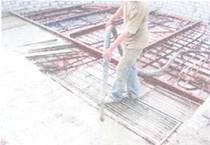 The development of
the domestic economy is now linked not least with the up- grade and expansion
of production effective building materials, including on the ba- sis of local
mineral raw materials and from industrial moves. This is especially true for
regions with harsh climatic condi- tions — the Urals, West and East accu- rate
Siberia, the Far East. In this regard, it is promising to use large-tonnage
slag waste generated by the combustion of coal at thermal power plants. The
solution to this problem have been actively en- gaged in 80-ies of the last
century, re-
The development of
the domestic economy is now linked not least with the up- grade and expansion
of production effective building materials, including on the ba- sis of local
mineral raw materials and from industrial moves. This is especially true for
regions with harsh climatic condi- tions — the Urals, West and East accu- rate
Siberia, the Far East. In this regard, it is promising to use large-tonnage
slag waste generated by the combustion of coal at thermal power plants. The
solution to this problem have been actively en- gaged in 80-ies of the last
century, re-
sulting in to a developed compositions, recommendations and normative docu- ments that enable the use of ash and slag wastes in concrete in the manufacture of personal time building products. However, in the manufacture of other construction materials are so far underused.
As shown by many studies, the use of such acidic ash may be significantly ex- panded, as in combination with liquid glass, they show high activity, and materials manufactured on their base, rapidly solidify and can have high strength.
For the development of non-autoclaved aerated concrete in the gold-silicon bonding agent low density (150…500 kg/m³) with high strength and water resis- tance need to solve complex problems, including:
selection of cheap and available raw;
components capable of hardening hydration with sodium silicate to form a
strong and water-resistant products — hydrous silicate of alumina and zeolites; to determine the optimum content of alkali, silica and alumina in the composi-
tion foam slag silicate; selection of additives that govern the timing of hardening molding mixtures
and modifying the structure of the material; to determine the influence of activation of ash on the properties foam slag silicate; establishment of optimal curing foam slag silicate.
The material is made on technology production not autoclaved aerated con- crete. The molding mixture slag silicate foam concrete has rapid solidification, for acсelerating hardening may have heat treatment at high temperatures. Demoulding foam concrete products, without carrying heat treatment is carried out through 10…12 h.
Foam on slag silicate binder — a cement-free material designed for use as wall material, insulating layers in the sandwich walling and conduction of buildings and structures.
Features foam slag silicate:
a short time curing;
no need for autoclave processing;
high physical and mechanical properties and water resistance; low shrinkage deformation;
increased fracture; reasonable price.
“Warm concrete ltd.” (Novosibirsk) is the only company in Novosibirsk, which applied in practice the production technology of monolithic walling exterior walls of polystyrene.
This technique allows: accelerate the pace of construction; to minimize the cost of lifting devices;
reduce the thickness of the wall by the application of energy saving signup ma-
terials, which include polystyrene; increase life walling as polystyrene is more durable than mineral wool insu-
lation; to reduce the cost of 1 m².
Polystyrene is a mixture of foamed polystyrene granules, Portland cement and special additives with the best thermophysical characteristics in the class of light- weight concretes.
Polystyrene is used in residential, civil and industrial construction and also in low-rise building houses from their own material. Walk-up building houses cur- rently are becoming increasingly popular in Novosibirsk and other Russian cities. In the construction of buildings polystyrene can be used: as an element cladding; the insulation of roofs, basements; for the device leveling heat and sound insulation.
In 2009, for the development of production technology of monolithic walling exterior walls of polystyrene “Warm concrete ltd.” was awarded the Great Gold Medal.
In the market of roofing materials throughout the world increases the propor- tion of polymeric membranes, such as Plastfoil. This is due to the fact that bitumi- nous materials on the basis of cardboard no longer correspond those requirements, which are now presented, to modern building materials. The main disadvantages of asphalt roll roofing: a low frost resistance, and, therefore, non opportunity to work with them in the negative temperature; melting in the sun; a large mass of coils with a small width; the necessary stacking of several layers to ensure the integrity; complexity and insecurity of work with open fire; rotting; small life. Therefore, construction organizations and far-sighted customers are increasingly in their pro- jects using polymer membrane Plastfoil.
Indisputable advantages of Plastfoil are:
high tensile strength material — up to 300 %;
the possibility of laying at negative temperature round to –35 °C;
ease of installation (width 2 m, in a single layer, mass of 1 m² — about 1,5 kg) and high-speed stacking of the membranes (up to 1000 m for 8-hour shift one roof team); high resistance to root penetration, aggression of microorganisms and bacteria; energy efficiency, which is implemented by a white upper layer, resulting in the
roof is heated much less than the black surface of bituminous materials; environmentally friendly — it does not decompose and does not emit current
toxic substances; high durability, service life of more than 35 years.
Polymer membrane Plastfoil is successfully used for waterproofing roofs with technical and ballast attachment to the base, in the inversion system. Also, it is de- signed for waterproofing basements, tunnels, underground structures, artificial lakes, swimming pools, storage tanks for liquids.
Australian researchers have developed a strong, lightweight building material that they believe could serve as the base for “green construction” in countries likes as China and India.
Dr. Obada Kayali and Mr. Karl Shaw of the University of New South Wales’ Australian Defence Force Academy (UNSW@ADFA) have developed in 2009, bricks and building aggregate that can be manufactured entirely from waste fly ash.
They say their unique manufacturing method traps any harmful chemicals, crea- ting an eco-friendly construction material that saves on construction costs and re- duces generation of greenhouse gases.
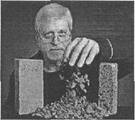 Flash bricks are 28
percent lighter and 24 percent stronger than comparable clay bricks while the
aggregate, Flashag, can be used to make concrete that is 22 percent lighter and
20 percent stronger than standard products. This results in lighter structures,
shallower foundations, cheaper transportation, and less usage of cement and
steel reinforcement. This also re- sults in more slender building components
and hence, larger rentable space.
Flash bricks are 28
percent lighter and 24 percent stronger than comparable clay bricks while the
aggregate, Flashag, can be used to make concrete that is 22 percent lighter and
20 percent stronger than standard products. This results in lighter structures,
shallower foundations, cheaper transportation, and less usage of cement and
steel reinforcement. This also re- sults in more slender building components
and hence, larger rentable space.
They also generate fewer emissions during manu- facture as they take less time in the kiln to manufacture than clay bricks.
These products had won widespread praise from structural engineers.
“Because Flashag results in lightweight yet sturdy concrete, it can be used effectively in high-rises where smaller structural columns are needed to maximize floor space and in concrete bridges requiring longer spans.”
Hardy cement had developed in 2009 by William Rickard and colleagues at the Cooperative Research Centre for Sustainable Resource Processing at Curtin University of Technology in Perth.
 The 13,5 million
tonnes of fly ash produced each year by Australasia’s coal fired power stations
could become a valu- able source material for fireproof con- cretes-and deliver
a significant environ- mental dividend.
The 13,5 million
tonnes of fly ash produced each year by Australasia’s coal fired power stations
could become a valu- able source material for fireproof con- cretes-and deliver
a significant environ- mental dividend.
Research has shown that fly ash-based geopolymers exhibit remarkable fire re- sistance while maintaining a high degree of mechanical strength.
Mr. Rickard, who has been concentrating on high temperature applications of fly ash geopolymers, said he became interested in the field after reading of their engineering and environmental potential. They have found the geopolymers have great fire resistance.
As well as using a waste product from burning coal in power stations, and pro- viding a strong construction material designed to insulate against fire, geopolymers also reduce greenhouse gas emissions.
The use of fly ash geopolymers as a fireproofing material not only provided an inexpensive solution to fire protection but also had a suite of benefits for the envi- ronment and community.
Soffit, finishing in the structure of the siding — a special panel, which is at- tached or strictly horizontal or at a certain angle, which provides an opportunity to design and design concept. It is used to decorate the under-roof structures and en- hance the overall design of the building, as well as for the fact that the building would give the overall aesthetic concept, which should not be in the sharp con- trast between the finishing material and roofing. Soffits are made of materials that
are common in the manufacture of siding. Aluminum, steel sheet, which took galvanizing, PVC, as well as other synthetic materials are that would make spotlights for your home. Also spotlights are available in three versions, which are called by number of sections, which make up floodlights. From siding is very easy to work, it can hide the huge number of defects, is virtually eter- nal material. Quality of siding does not change over time, it does not require additional restoration work.
It isn’t afraid of sunlight, or humidity, no wind, no snow and rain. Therefore, we can not worry about that, even after decades, of the facade of your house will be changed — in fact cover is so durable that can withstand the blows. This substan- tial damage won’t be done, if ever, any changes will appear.
 Siding is the outer
covering or cladding of a house meant to shed water and pro- tect from the
effects of weather. On a building that uses siding, it may act as a key element
in the aesthetic beauty of the structure and directly impact its property
value. Siding may be formed of horizontal boards or vertical boards (known as
weatherboarding in many countries), shingles, or sheet materials. In all
fourcases, avoiding wind and rain infiltration through the joints is a major
challenge, met by overlapping, by covering or sealing the joint, or by creating
an inter-
Siding is the outer
covering or cladding of a house meant to shed water and pro- tect from the
effects of weather. On a building that uses siding, it may act as a key element
in the aesthetic beauty of the structure and directly impact its property
value. Siding may be formed of horizontal boards or vertical boards (known as
weatherboarding in many countries), shingles, or sheet materials. In all
fourcases, avoiding wind and rain infiltration through the joints is a major
challenge, met by overlapping, by covering or sealing the joint, or by creating
an inter-
locking joint such as a tongue-and-groove or rabbet. Since building materials ex- pand and contract with changing temperature and humidity, it is not practical to make rigid joints between the siding elements.
Siding may be made of wood, metal, plastic (vinyl), masonry, or composite ma- terials. It may be attached directly to the building structure (studs in the case of wood construction), or to an intermediate layer of horizontal planks called sheathing.
Wood siding in overlapping horizontal rows or “courses” is called clapboard.
 In colonial times,
Eastern white pine was the most common material. Wood siding can also be made
of naturally weather-resistant woods such as redwood or cedar. Jointed
horizontal siding may be shiplapped.
In colonial times,
Eastern white pine was the most common material. Wood siding can also be made
of naturally weather-resistant woods such as redwood or cedar. Jointed
horizontal siding may be shiplapped.
Vertical horizontal siding may have a cover over the joint: board and batten, popular in American wooden Carpenter Gothic houses; or less commonly behind the joint — batten and board.
Plywood sheet siding is some- times used on inexpensive buil- dings, sometimes with grooves to imitate vertical shiplap siding. One example of such grooved ply-wood siding (is the type called T1-11 (“tee-one- eleven” — often written T111).
Wood shingles or irregular cedar “shake” siding was used in early New England construction, and was revived in Single Style and Queen Anne style architecture in the late 19th century.
Wood siding is very versatile in style and can be used on a wide variety of homes in any color palette desired.
 |
Wood is a moderately renewable resource and is biodegradable. However, most paints and stains used to treat wood are not environmentally friendly and can be toxic. Wood siding can provide some minor insulation and structural properties as compared to thinner cladding materials.
Wood clapboard is often imitated using vinyl siding or uPVC weatherboarding. It is usually produced in units twice as high as clapboard. Plastic imitations of wood shingle and wood shakes also exist. Vinyl or plastic siding has grown in popularity due to the generally low maintenance and low cost appeal it offers. It is among the easiest forms of siding to install, making it the top choice for many new home builders today.
Since plastic siding is a manufactured product, it may come in unlimited color choices. Historically vinyl sidings would fade, crack and buckle over time, requiring the siding to be replaced. However, newer vinyl options have improved and resist damage and wear better. Vinyl siding is sensitive to direct heat from grills, bar- becues or other sources. Unlike wood, vinyl siding does not provide additional insulation for the building, unless an insulation material (e.g., foam) has been added to the product. It has also been criticized by some fire safety experts for its heat sensitivity. This sensitivity makes it easier for a house fire to jump to neighboring houses in comparison to materials such as brick or masonry.
An environmental cost of vinyl siding is that it is difficult to dispose of respon- sibly. It cannot be burned (due to toxic dioxin gases that would be released) and currently it is not recycled.
Vinyl siding is also considered one of the more unattractive siding choices by many. Although some newer styles eliminate this complaint, more widespread varieties often have visible seam lines between panels and generally do not have the quality appearance of wood, brick, or masonry. The fading and cracking of older types of plastic siding compound this issue. In many areas of newer housing development, particularly in North America, entire neighbourhoods are often built with all houses clad in vinyl siding, given an unappealing uniformity. Some cities now require, or at least campaign, for house developers to use more varied forms of siding and to veer towards more quality choices.
Metal siding comes in a variety of metals, styles, and colors. It is most often associated with modern, industrial, and retro buildings. Utilitarian buildings often use corrugated galvanized steel sheet siding or cladding, which often has a coloured vinyl finish. Corrugated aluminium cladding is also common where a more durable inish is required.
The Father of modern day metal siding was Francis (“Frank”) Hoess. In the first few years after World War II, manufacturers began developing and widely distribu- ting aluminum siding. Among them Indiana machinist Frank Hoess was credited with the invention of the configuration seen on modern aluminum siding. His ex- periments began in 1937 with steel siding in imitation of wooden clapboards. Other types of sheet metal and steel siding on the market at the time presented problems with warping, creating openings through which water could enter, introducing rust. Hoess remedied this problem through the use of a locking joint, which was formed by small flap at the top of each panel that joined with a U-shaped flange on the lower edge of the previous panel thus forming a watertight horizontal seam. After he had received a patent for his siding in 1939, Hoess produced a small housing development of about forty-four houses covered in his clapboard-style steel siding for blue-collar workers in Chicago. His operations were curtailed when war plants commandeered the industry. In 1946 Hoess allied with Metal Building Products of Detroit, a corporation that promoted and sold Hoess siding of ALCOA aluminum. Their product was used on large housing projects in the northeast and was purpor- ttedly the siding of choice for a 1947 Pennsylvania development, the first subdivision to solely use aluminum siding. Products such as 4″, 6″, 8″ and 10″ 12' unpainted aluminum panels, starter strips, corner pieces and specialized application clips were assembled in the Indiana shop of the Hoess brothers. Siding could be applied over conventional wooden clapboards, or it could be nailed to studs via special clips af- fixed to the top of each panel. Insulation was placed between each stud. While the Hoess Brothers company continued to function for about twelve more years after the dissolution of the Metal Building Products Corporation in 1948, they were not as successful as rising siding companies like Reynolds Metals.
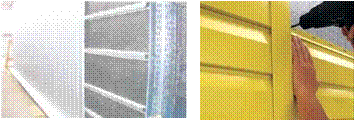
Pros and cons of metals versus other siding materials
Cons:
metal sidings are very energy-intensive to manufacture; they do not provide insulation for the structure;
metals are a non-renewable resource in the sense that they are a finite resource (the earth cannot get any more of them than it already has.) (However, metals are often recycled, so they are renewable in the sense of recycling.); they often have to be shipped long distances from point of manufacture to point
of use; may be difficult to install due to its relatively high weight. Pros (despite the drawbacks above, metal siding):
is durable;
requires minimal maintenance; is fire-resistant; is recyclable;
and can be very cost-effective;
it resists rot; it resists bugs;
it rarely gets hail damage. (Steel siding is rarely damaged by hail. However,
certain aluminum siding is highly susceptible to hail damage.)
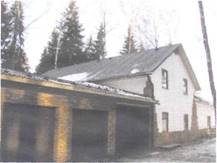 Masonry sidings are
varied (brick and stone) and can accommodate a va- riety of styles — from
formal to rustic. Though masonry can be painted or tinted to match many color
palettes, it is most suited to neutral earth tones. Ma- sonry has excellent
durability (over 100 years), and minimal maintenance is required. The primary
drawback to ma- sonry siding is cost. Precipitation can threaten the structure
of buildings, so it is important that the siding will be able to withstand the
weather conditions in
Masonry sidings are
varied (brick and stone) and can accommodate a va- riety of styles — from
formal to rustic. Though masonry can be painted or tinted to match many color
palettes, it is most suited to neutral earth tones. Ma- sonry has excellent
durability (over 100 years), and minimal maintenance is required. The primary
drawback to ma- sonry siding is cost. Precipitation can threaten the structure
of buildings, so it is important that the siding will be able to withstand the
weather conditions in
the local region. For regions that receive a lot of rain, EIFS (Exterior Insulation and Finish Systems), have been known to suffer underlying wood rot problems with excessive moisture exposure.
The environmental impact of masonry depends on the type of material used. In general, concrete and concrete based materials are intensive energy materials to produce. However, the long durability and minimal maintenance of masonry si- dings mean that less energy is required over the life of the siding.
Various composite materials are also used for siding: asphalt, asbestos, fiber cement, aluminum (ACM) etc. They may be in the form of shingles or boards, in which case they are sometimes called clapboard.
Composite sidings are available in many styles and can mimic the other siding options. Composite materials are ideal for achieving a certain style or “look” that may not be suited to the local environment (e.g., corrugated aluminum siding in an area prone to severe storms; steel in coastal climates; wood siding in termitein- fested regions).
Costs of composites tend to be lower than wood or masonry options, but vary widely as do installation, maintenance and repair requirements. Not surprisingly, the durability and environmental impact of composite sidings depends on the specific materials used in the manufacturing process.
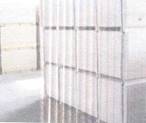 Material is
environmentally friendly, contains no harmful substances and asbestos, and does
not emit toxic substances, even when heated.
Material is
environmentally friendly, contains no harmful substances and asbestos, and does
not emit toxic substances, even when heated.
How convenient? Glass magnesium sheet has a high strength, hardness, and high fire-technical characteristics. Such properties as high resistance to moisture and save a form in the wet state can be used in rooms with high humidity. It is suitable for mounting, more flexible, stronger than other materials.
Glass magnesium sheet is fire-resistant and water resistant has high strength. In addition, the front side of the plate allowed pasting any decorative material.
Where are you using? Glass magnesium sheet is used for finishing the cei- ling, wall surfaces, columns, and walls in the room. This is a reliable basis for any coverage, including for the tiles. The material is ideal for finishing showers, saunas, swimming pools, as the sheet is able to withstand high humidity, tem- perature changes and open fire. In processing the surface of the sheet can be used various kinds of fillers, paints, adhesives. The surface is ready for painting; wall covering and aluminum-composite panels, veneer, plastic, DSP, ceramic tiles, glass and mirror tiles.
Brief technical characteristics of Glass magnesium sheet:
density — 0,94 g/cm3. Drag force on a bend in the dry state — 15 MPa; drag force on a bend in the wet — 22 MPa; reshape when wet — no more than 0,34 %;
reductions in exposure to high temperatures — less than 1 %;
permeability — the rear wall of the water-resistant. Resistant to moisture
and mold; fire resistance — with the sheet thickness 6 mm, he is able to keep the fire
within two hours, can withstand heat up to 1200 degrees; colour — white;
safety — do not contain in its composition of hazardous substances, asbestos, does not emit toxic, harmful substances, even when heated and can be used for decoration of public premises. It does not smell.
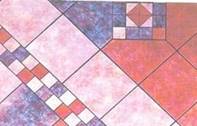 Porcelain tiles, as
decoration material became widespread relatively recently. Up to 70 years of
the last century ceramics produced by some European, mostly Italian companies
in a small range, non-glazed version and has been used almost exclu- sively for
the finishing of technical facili- ties, which are important to have moisture
resistance and increased strength.
Porcelain tiles, as
decoration material became widespread relatively recently. Up to 70 years of
the last century ceramics produced by some European, mostly Italian companies
in a small range, non-glazed version and has been used almost exclu- sively for
the finishing of technical facili- ties, which are important to have moisture
resistance and increased strength.
Porcelain tile has a very low porosity and, as a consequence — low water absorp- tion. Absorption of 0,05 % belongs only porcelain stoneware and not available ceramic tiles and natural stone. Therefore, porcelain tiles are now widely used in exterior clad- ding of buildings every climatic zone.
Porcelain tile has the highest degree of resistance to aggressive media and wear (wear on a scale of PEI — up to 5). Porcelain tile does not lose its color over time and does not fade in the sun. Modern public buildings, stations, airports, shops pre- fer it for these reasons.
Porcelain tile is resistant to shock loads and pressure. This property of the por- celain tile is frequently used in its application as a floor covering industrial pre- mises. Huge selection of porcelain tile on the market today makes it suitable for construction or repair of virtually all types of buildings and premises.
Disadvantages of porcelain tile — it is only the investigation of its merits, as for instance, the increased hardness. It can be noted, perhaps only two. This is relative fragility of transportation and complexity in processing and cutting of porcelain tiles. But these shortcomings can easily be addressed with proper and professional approach to work with granite, and are, rather, the inevitable costs.
Water-dispersion paint materials (acrylic paint) — the materials of the pre- sent and future.
The industry coating materials, many years developing in Russia first of all, has been directed on manufacture of an industrial paint on organic solvents. Using a dye associated with certain inconveniences: the smell, toxicity, flammability and fragility of the coating.
Today we offer domestic consumers new, environmentally friendly and very high quality good — water-dispersion acrylic paints and coating materials.
Water-based paints — a product of the XXI century. Acrylic paints are among the most cost-effective and user-friendly application. The share of consumption in Western Europe, according to different estimates of up to 80 %.Acrylic paints are the most significant part of all water-dispersion paints. The main advantage of acrylic paints is that the link included in their composition, dispersed in the form of fine particles in water and insoluble in the more expensive, toxic or flammable organic solvents.
Domestic consumer has little acquaintance with the water-dispersion paints, and, unfortunately, does not trust them.
The advantages of acrylic paints:
environmentally friendly, paint does not contain organic solvents, so they have
virtually no odor, not toxic; acrylic binders can produce colors with high elasticity, water-repellent proper-
ties and simultaneously a high vapor permeability (“breathing” ability); acrylic paint can be applied by brush, roller or spray; quick drying (within 30…40 min.) Dries almost no smell;
fire and explosion, as during storage and application, and during operation; durability of the coating (8…12 years);
diluted acrylic paint if necessary with water, fresh stains can be removed
with water; forming coatings have high adhesion and have high performance characteris- tics — they are flexible, durable and resistant to wash, acrylic paints retain their color and can withstand intense ultraviolet irradiation.
All these properties of water-dispersion paints allow relating these compounds to the category of clean and safe materials.
All finished products meet the specifications, has certificates of conformity, hygienic certificates. Production in the manufacturing process undergoes strict quality control at all stages, which guarantees high quality of materials.
DuPont Corian is a solid, non-porous, homogeneous surfacing material com- posed of ± 1/3 acrylic resin (also known as PolyMethyl MethAcrylate or PMMA) and ± 2/3 natural minerals. The main mineral is Aluminium TriHydrate (ATH) de- rived from bauxite, an ore from which aluminium is produced.
Key characteristics:
Resistant. Since its introduction in 1967, DuPont Corian has proved itself to be
a remarkably durable material that is easy to live with. It cannot delaminate and stands up well to daily wear and tear. It resists most of the impacts, nicks and cuts that occur in heavy traffic areas. DuPont Corian has been tested for its mechanical, thermal, electrical and other surface properties.
Hygienic. DuPont Corian is a non-porous material. It is solid through its entire thickness and can be fabricated with inconspicuous seams, rendering its surface hygienic. DuPont Corian surfaces do not support the growth of bacteria or fungi. DuPont Corian has been certified by an independent laboratory as a hygienic mate- rial according to the international norm DIN EN ISO 846.
Repairable. Surfaces in DuPont Corian are renewable, meaning they can be fully restored with ordinary mild abrasive cleansers and a scouring pad. Cigarette burns, for example, can be easily removed in this way. Damage caused by abuse can usually be repaired on site without having to completely replace the material.
Non-toxic. DuPont Corian is an inert and non-toxic material. Under normal temperature conditions, it does not emit gases. When burned, it releases mainly Carbon Oxides and the smoke generated is optically light and does not contain toxic halogenated gases. Because of these properties, DuPont Corian is used in public areas and for sensitive applications such as airport check-in counters, walls and work surfaces in hospitals and hotels.
 Thermoformable. DuPont
Corian can be thermoformed in wooden or metal moulds at controlled temperatures
in order to create various 2D and 3D design objects. Embos- sing effects can
also be created using the Bas Relief technique.
Thermoformable. DuPont
Corian can be thermoformed in wooden or metal moulds at controlled temperatures
in order to create various 2D and 3D design objects. Embos- sing effects can
also be created using the Bas Relief technique.
Versatile. The applications for DuPont Corian are limited only by your own imagination. Pieces of DuPont Corian can be glued together inconspicuously to create a seamless look, giving virtually unlimited design possibilities for surfaces. Long counters, for example, can be easily made in pieces in a workshop and then joined together at the installation site. Edges can be built up to look thicker.
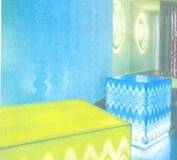 Translucent. The
translucency of DuPont Corian is especially striking in the lighter colours as
well as with thinner sheets. Many designers are now using the material to
create lamps or lighting effects in various applications. The new colour
family, called the Illumination Series, consists of 6 colours in 6 mm and 12,3
mm sheets fea- turing enhanced translucency to be used for creating special
lighting effects.
Translucent. The
translucency of DuPont Corian is especially striking in the lighter colours as
well as with thinner sheets. Many designers are now using the material to
create lamps or lighting effects in various applications. The new colour
family, called the Illumination Series, consists of 6 colours in 6 mm and 12,3
mm sheets fea- turing enhanced translucency to be used for creating special
lighting effects.
Workable like wood. DuPont Corian can be worked like hardwood and using similar tools. Most DuPont Corian fabricators origi- nally trained as carpenters.
Environmentally friendly. DuPont Corian is manufactured in compliance with strict standards in order to limit waste and energy consumption at all stages of the production pro-
cess. Both the material itself and the adhesives and sealants used to install it are GREEN GUARD Indoor Air Quality Certified as producing low VOC emissions.
Know-how. DuPont Corian is manufactured by DuPont as sheets and pre- formed shapes in three plants located in the USA, Japan and Korea. DuPont Corian sheets are produced on continuous casting lines and DuPont Corian shapes are produced through polymerization inside metal moulds using a continuous manu- facturing process.
DuPont corian shapes. A wide range of DuPont Corian shapes created using cast moulding technology is available in 4 solid colours for custom integration with DuPont Corian sheets in order to create a single, continuous surface. This includes vanity basins in solid colours for bathrooms, single and double sinks for kitchens, bars, small wash-up areas, hospitals and laboratories. Bonding DuPont Corian shapes into sheets does not create any rims that might trap dirt or water, minimizes cleaning and maintenance and provides improved hygiene. Care, maintenance and installation instructions are included in the packaging. Appropriate accessory products, including installation hardware, are available and recommended for residential kitchens only.
Standard thermoformed shapes. Sinks and bowls in different shapes and dimen- sions created by thermoforming and bonding together pieces of DuPont Corian are available in all colours.
A number of independent companies manufacture and distribute these shapes through the Quality Network. This enables architects and designers to achieve particu- lar aesthetic effects, such as unbroken colour continuity for an entire work surface.
Custom shapes. Thanks to their extensive experience in DuPont Corian fabrica- tion, most Quality Network fabricators can make practically any shape specified by designers by thermoforming and joining together pieces of DuPont Corian. These custom shapes, however, are not covered by the DuPont Warranty.
Перечень использованных электронных источников
http://www.civil.columbia.edu/pages/research/facultyresearch/concrete.html. Дата обраще- ния: 14.12.2123.
http://www.civil.columbia.edu/meyer/research/projects.html. Дата обращения: 14.12.2123. http://www.civil.columbia.edu/meyer/download/facade.pdf. Дата обращения: 14.12.2123. http://www.civil.columbia.edu/meyer/download/fiberre.pdf. Дата обращения: 14.12.2123. http://www.civil.columbia.edu/meyer/download/paving.pdf. Дата обращения: 14.12.2123. http://news.mongabay.com/2006/0731-nsw.html. Дата обращения: 14.12.2123. http://www.sciencealert.com.au/news/20092705-19196.html. Дата обращения: 14.12.2123. http://en.wikipedia.org/wiki/Siding. Дата обращения: 14.12.2123. http://corian.co.uk/Corian/en_GB/assets/downloads/documentation/what_is_corian_en.pdf.
![]()
Дата обращения: 14.12.2123.
![]()
20
Методическое Объединение Учителей английского языка Романов Д.Е.
Материалы на данной страницы взяты из открытых источников либо размещены пользователем в соответствии с договором-офертой сайта. Вы можете сообщить о нарушении.